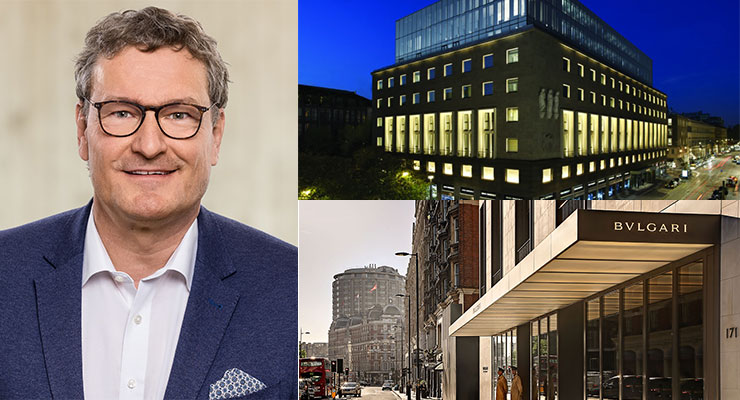ACROSS: HOW SIGNIFICANT IS SHOPPING TOURISM FOR THE TRAVEL AND TOURISM INDUSTRY?
CHRISTIAN BUER: In a more limited sense, the term shopping tourism is associated with a visit to a shopping center or an outlet, with a clear focus on shopping locally. Shopping tourism in the broader sense is particularly important for city tourism. Examples of popular European destinations that are characterized by the combination of leisure and cultural trips with shopping include Berlin, Hamburg, Munich, Paris, and Rome. Those destinations provide travelers with the opportunity to spend some time shopping in addition to the standard tourist program and offer retail options that may not be available in the travelers’ home towns. In the latter case, shopping tourism represents an expansion of the original leisure activities.
ACROSS: TO WHAT EXTENT DO THE RETAIL AND HOTEL INDUSTRIES BENEFIT FROM EACH OTHER?
BUER: There are major differences worldwide in that respect. In Germany, for example, there is rarely a direct connection. Internationally, there are a number of examples in which the hotel is part of the offering of a larger structural facility – usually a shopping center. If we stick with the example of Germany, however, retail areas are often integrated into hotels in upscale or luxury hotels that are located in city centers or on shopping streets, and the connection, therefore, is quite evident. However, that can only work in cities in which the optimization of hotel space leads to a higher retail yield than if the space were used by traditional hotel operations or their restaurants.
ACROSS: WHERE DO THOSE DIFFERENCES COME FROM?
BUER: A symbiosis between retail and hotel is recognizable in the international environments of Dubai, Abu Dhabi, Singapore, Hong Kong, etc. In European cultures, the connection between hotel and retail is more traditional and born by chance. There are usually historical reasons behind that. For example, city centers in Germany were relegated to the provision of utilities and housing in the post-war period. The demand for hotels only began to progressively increase in the mid-1980s. Retail spaces had already been developed by that point.
ACROSS: IN VERY SPECIFIC TERMS: WHAT FORM CAN SYMBIOSES TAKE?
BUER: At present, there is a noticeable increase in demand for overnight stays by those traveling to a destination with an outlet. Symbioses can arise as a result, and models of such symbioses have already been discussed. However, none of the proposals have been implemented yet. For example, there was a model that we’d considered for one location: If a customer generated a minimum turnover at the outlet, he or she would be reimbursed the amount of the overnight stay. In concrete terms, that would mean: The retailer would reward a guest for his or her turnover and give the guest an additional “discount” by covering the cost of the overnight stay. In return, the hotelier would offer the retailer a guaranteed room rate prior to the generation of such a result. The challenge: The target formulation of the core activity of the developer as well as that of the investor would no longer be congruent with that of the operator – retail or hotel. As a result, such an approach remains more of a model than a major marketing instrument. It simply fails to promote the core interest of the respective player. In Germany, such correlative models for the overlapping of different business areas have only been implemented in cooperative, non-binding arrangements so far.
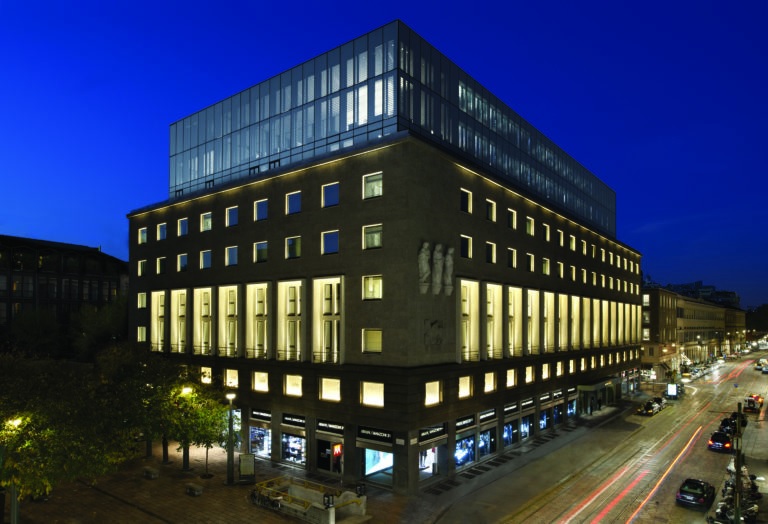
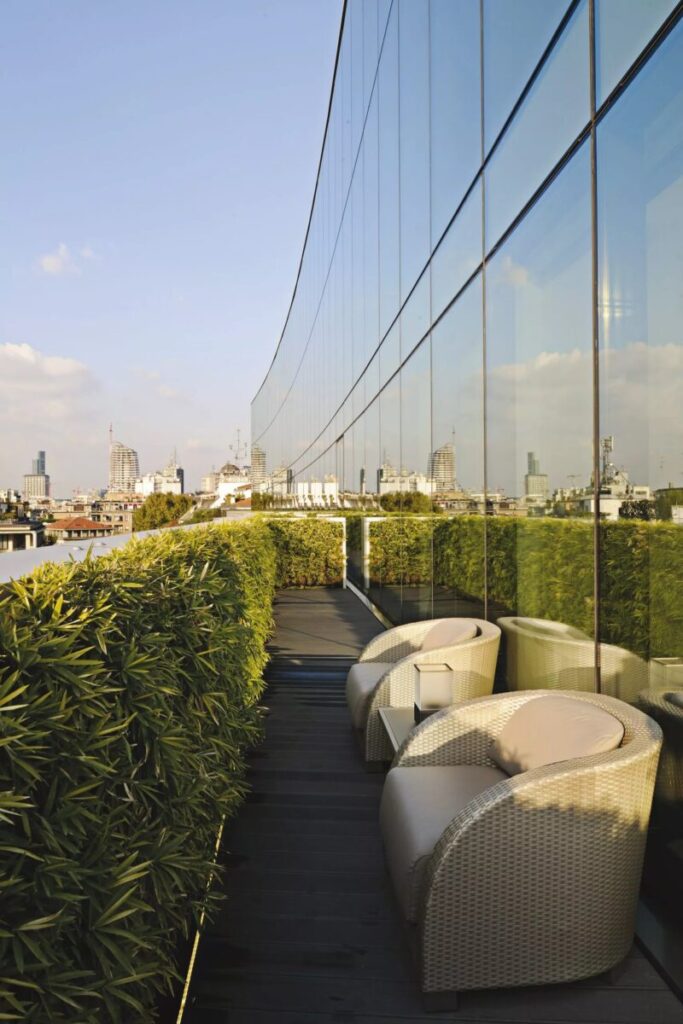
ARMANI
Armani Hotels & Resorts was founded in 2005 through an agreement between the Italian fashion designer Giorgio Armani and the real estate developer Emaar Properties. The first hotel, the Armani Hotel Dubai, opened in April 2010 in the world’s tallest building, the Burj Khalifa. The 160-room hotel extends over 10 floors of the 160-story building and features seven restaurants and lounges, including a Japanese, an Indian, and an Italian restaurant, as well as an Armani Spa. The second Armani hotel was opened in November 2011 in the designer’s home city of Milan.
ACROSS: WHAT IS THE SITUATION IN CITIES THAT ARE ATTRACTIVE TO TOURISTS?
BUER: As explained before, major cities greatly benefit from tourism. In a city like Berlin, shopping tourism is driven by international visitors. The proportion of tax-free sales in the clothing and fashion sector is 52 percent. The secondlargest segment is watches and jewelry, which accounts for 30 percent of the tax-free volume. The symbiosis is clearly discernible: International guests appreciate the available shopping opportunities. The leading tax-free provider is “Global Blue”, which generated sales of around 1 billion euros in 2008. In 2019, it generated 2.6 billion euros. The average spend at the time was around 502 euros for guests from China and 490 euros for those from the USA. However, the hotel industry’s direct “driver effect” on tourism cannot be deduced as a result. The services must be considered separately.
ACROSS: WHICH RETAIL SEGMENTS AND PRICE CATEGORIES ARE PARTICULARLY POPULAR AMONG SHOPPING TOURISTS? WHICH HOTEL FORMATS ARE PARTICULARLY INTERESTING WHEN IT COMES TO COMBINING THE RETAIL AND HOTEL INDUSTRIES?
BUER: Destinations and cities that already cater to the upscale segment of city life will attract upscale city tourists who are eager to do a bit of shopping. There is a correlation between “luxury stores” and “luxury hotels”. As a result: If there is a sufficient number of upscale hotels, strong demand for luxury retail goods can also be expected.
ACROSS: HOW DOES THE CONNECTION BETWEEN THE RETAIL AND HOTEL INDUSTRIES DIFFER IN TERMS OF BUSINESS AND PRIVATE TRAVEL?
BUER: The issue is primarily driven by private travelers who have an affinity for shopping. Business travelers don’t usually go shopping. Their retail spending does not go beyond the occasional purchase or the buying of so-called “souvenirs”.
ACROSS: CAN THE HOTEL INDUSTRY PROVIDE A VIABLE MEANS FOR SHOPPING CENTERS TO COMPENSATE FOR VACANCIES, OR IS THE INTEGRATION OF THE HOTEL INDUSTRY, AN ISSUE THAT IS EXCLUSIVELY LIMITED TO THE BEST PERFORMERS?
BUER: It is a question of profitability in each individual case. Many locations are currently examining whether a wide variety of office and retail spaces would be suitable as accommodation solutions. New market providers, such as Numa and Limehome, offer the option of marketing accommodation as a “direct rental” – the socalled no-frills strategy. Good, central locations provide an opportunity for hotels and restaurants to make the retail sector even more attractive. That works quite well and is almost symbiotic. Ultimately, however, every location and every service provider and accommodation provider must find its own customers and guests. Shopping alone will not generate sufficient demand for a hotel to operate profitably. If it can, then it will be in the simple category, and, again, not in “city center locations” (brown-field), but rather at outlets (green-field).
ACROSS: YOU PREVIOUSLY TOUCHED UPON THE SUBJECT OF OUTLETS. WHAT POTENTIAL DOES THAT FORMAT, WHICH IS NOT TYPICALLY LOCATED IN URBAN AREAS, HAVE? WHAT CHALLENGES NEED TO BE MET IN THAT REGARD?
BUER: Outlets, particularly those that are located in a tourist or tourism-related environment, have potential in terms of the so-called quality of stay and, as such, complement demand behavior. Therefore, if there is an additional offer in the form of a tourist point of interest, the demand for a given outlet will increase. However, it must be integrated into a tourist environment. The Fashion Outlet Landquart in Switzerland serves as one such example. Visitors can do a bit of shopping there and can also take advantage of the tourist attractions offered by the surrounding skiing destinations.
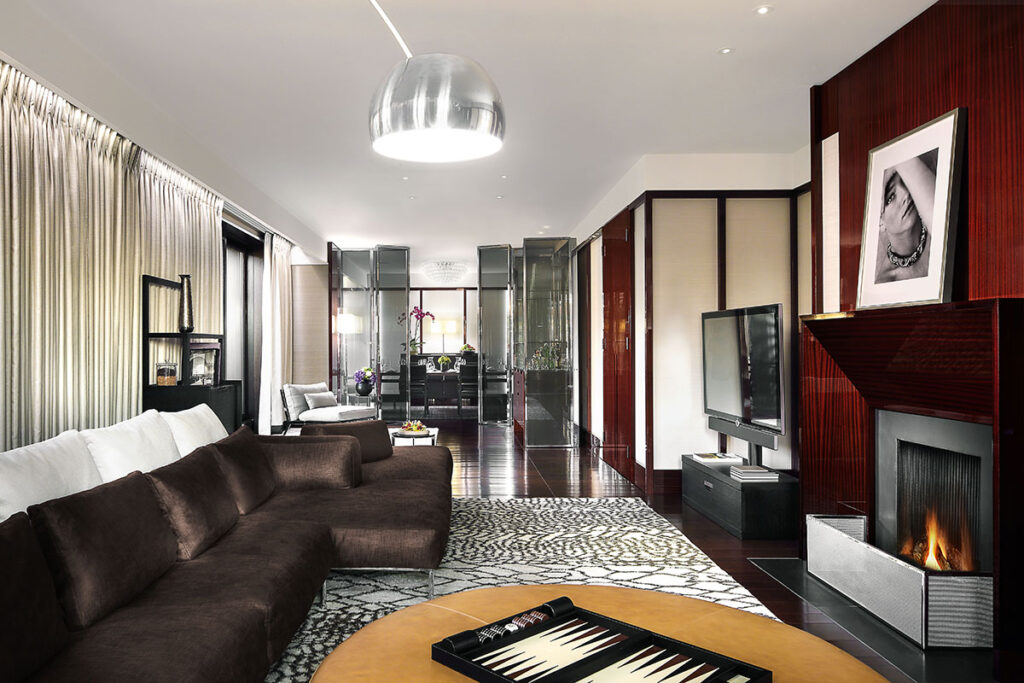
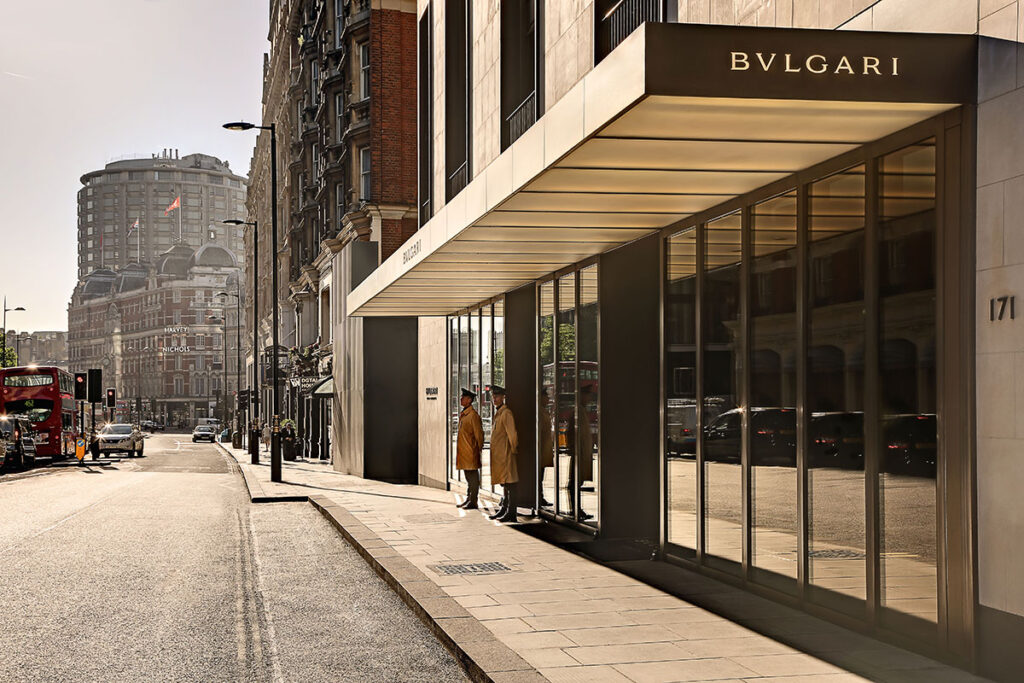
BULGARI
In 2001, Italian jeweler Bulgari teamed up with the Luxury Group, the luxury division of Marriott International, to create Bulgari Hotels & Resorts. The first Bulgari Hotel was opened in Milan in 2004 in a renovated 18th-century Milanese palazzo. It offers 58 rooms and suites, an Italian restaurant, a bar, a lounge, and a private garden. The Bulgari Resort in Bali followed in 2006, comprising 59 villas, two restaurants, a bar, a Bulgari Spa, a cliff-top pool, a fitness center, and a Bulgari store. French luxury giant LVMH acquired Bulgari in 2011, making it the owner of Bulgari Hotels & Resorts. The Bulgari Hotel in London was opened in 2012. Today, Bulgari also has hotels in Dubai, Beijing, Shanghai, Tokyo, and Rome. New hotels in Ranfushi (Maldives), Miami Beach, and Los Angeles are scheduled to open in the next two years.
ACROSS: MOST OWNERS AND MANAGERS OF RETAIL LOCATIONS HAVE NO CONNECTION TO THE HOTEL INDUSTRY. WHAT ARE SOME OF THE OPERATIONAL CHALLENGES?
BUER: The challenges clearly lie in the diverging interests of the two sectors. Cooperation tends to be seen as one-sided due to the low returns in the hotel sector.
ACROSS: LUXURY BRAND LVMH IS PLANNING TO OPEN A LOUIS VUITTON HOTEL ON THE CHAMPS-ELYSÉES IN PARIS. ARE THOSE KINDS OF FORMATS DESTINED FOR THE LUXURY SECTOR, OR IS THERE ALSO POTENTIAL FOR MAINSTREAM BRANDS?
BUER: I expect such concepts to remain unique, perhaps with additional credible locations along the Cote D’Azure or on Sardinia. Only destinations characterized by a distinct sense of luxury can implement such a concept. In complete contrast, we once considered a “discount hotel” and received generally positive feedback from retailers. The restriction was and still remains: The sales area must remain flexible, in other words: If the micro location is no longer successful, it must be possible to close down and relocate the site. However, if a hotel with a term of 20 years is built above a discount store, the capital is tied up in the space and is no longer fungible. That is why such models are generally reserved for the luxury segment, where a strong connection between the brand and the hotel is created, and the hotel is positioned directly above it.

PROF. DR. CHRISTIAN BUER
Christian Buer is a Professor of Business Administration and Hotel Real Estate & Financing and the Head of Tourism & Hospitality at Heilbronn University. He founded Nemis in 2004 and has since dispensed advice to developers, financiers, and real estate experts, particularly in the area of tourism real estate. The Nemis Group aims to highlight young and dynamic hotel products, such as the Marriott brand Moxy Hotels, in strong economic regions. He is also a partner at Horwath HTL DACH, a leading consulting firm in the hotel, tourism, and leisure sector with offices in Vienna, Zurich, and Frankfurt.

